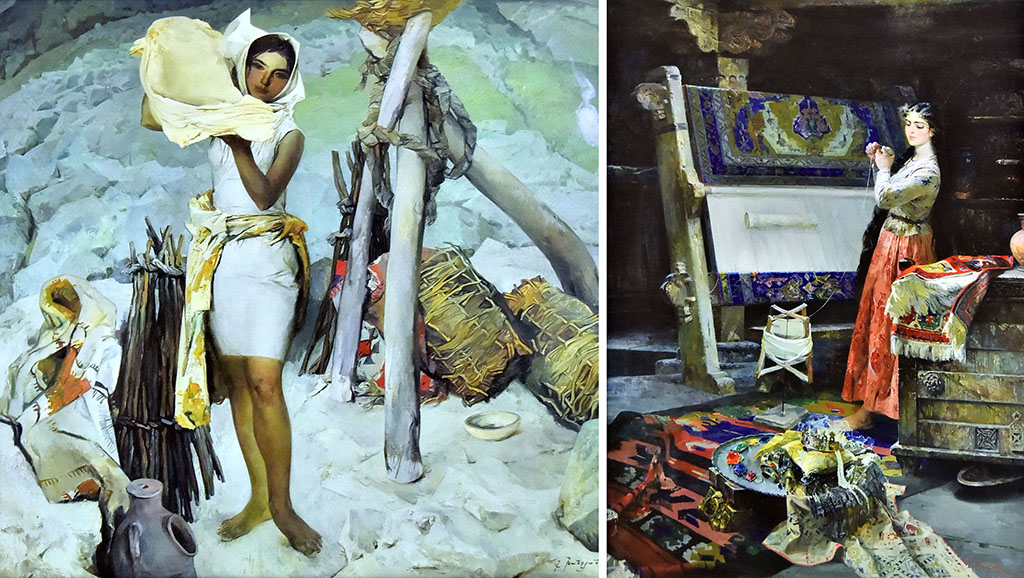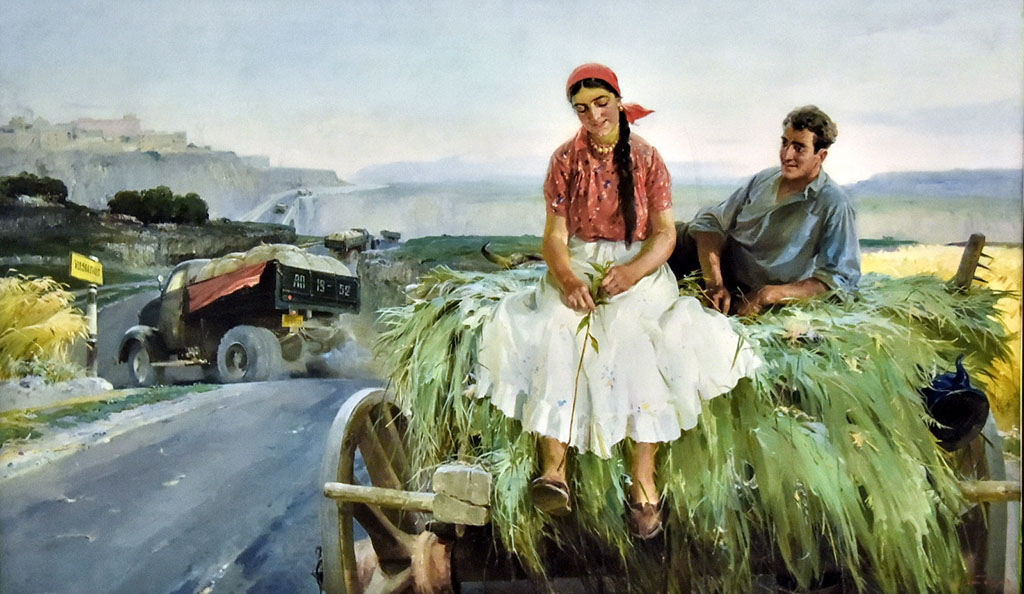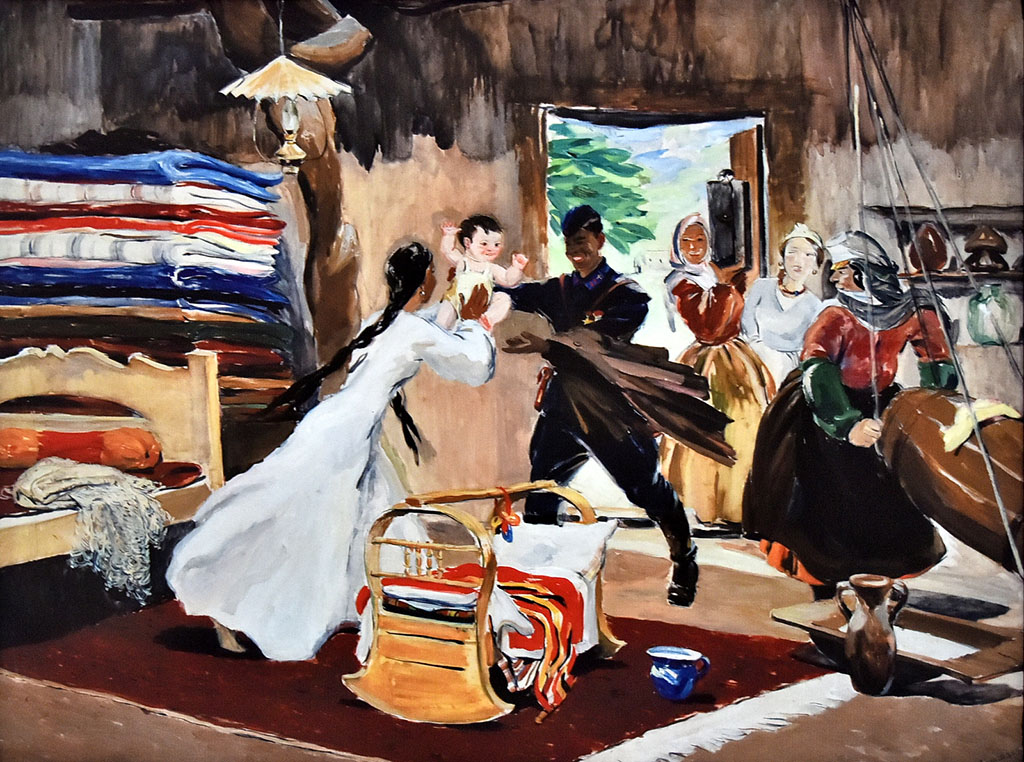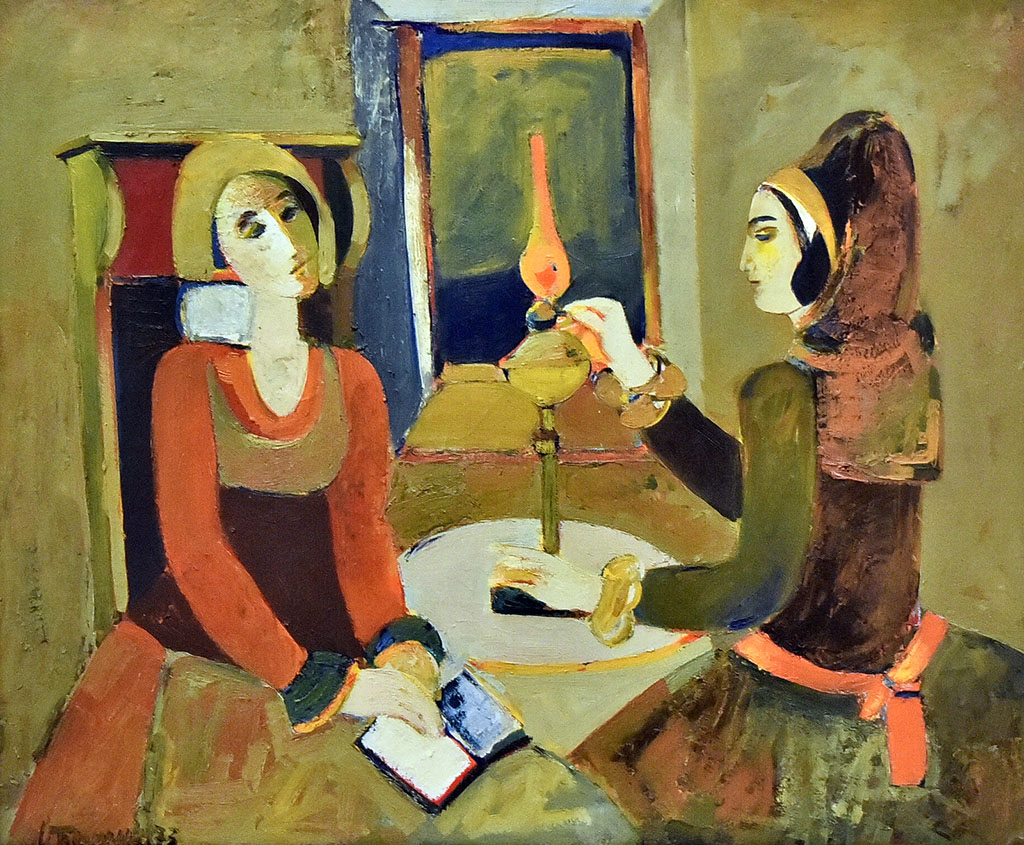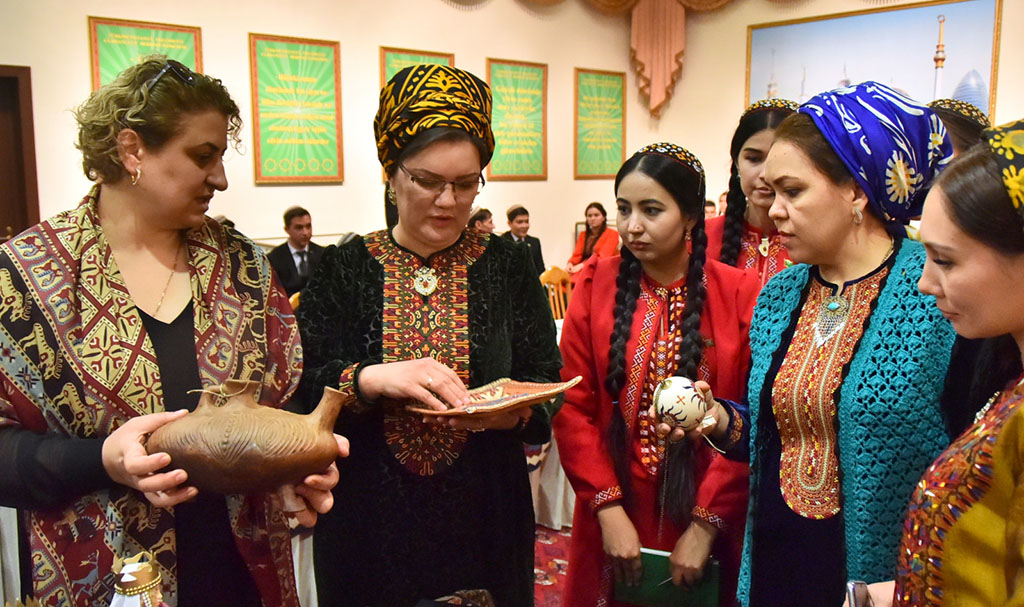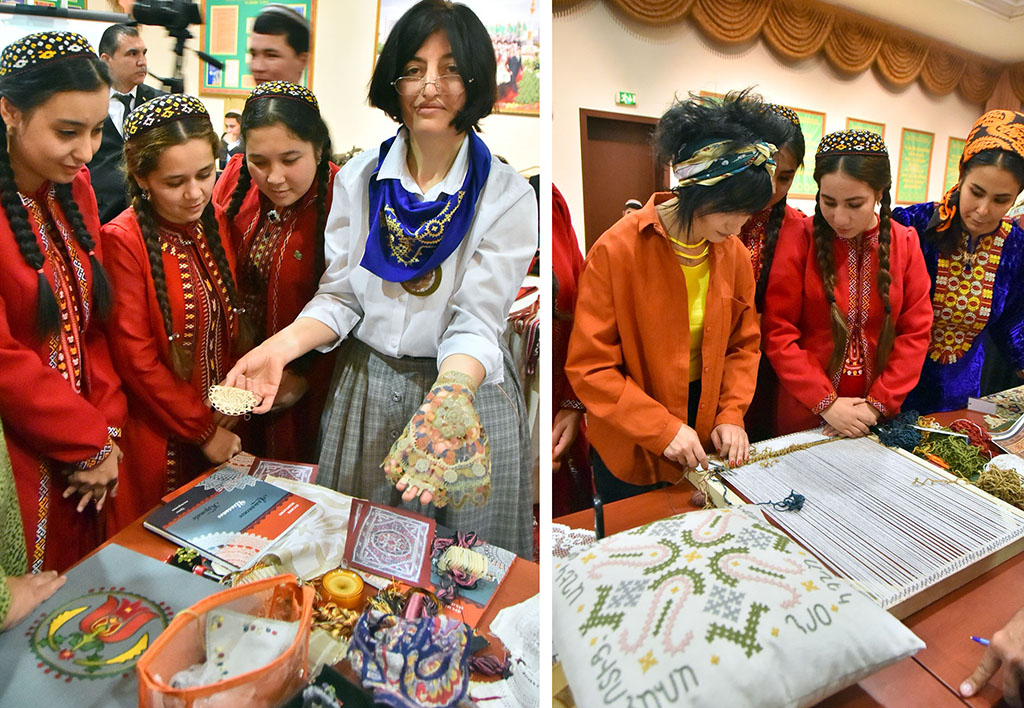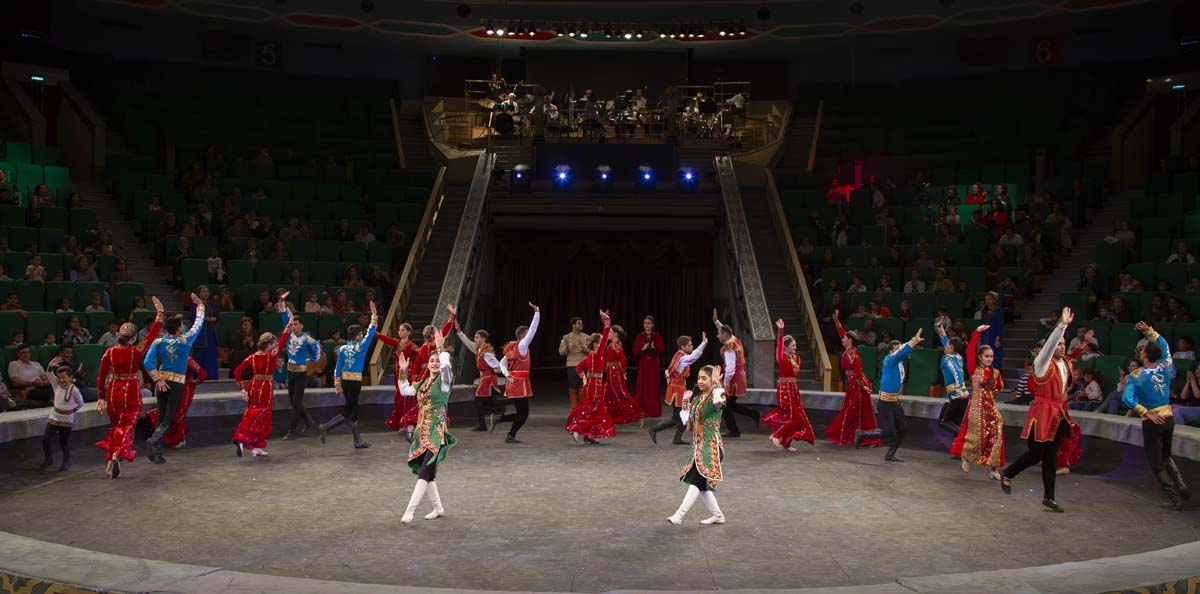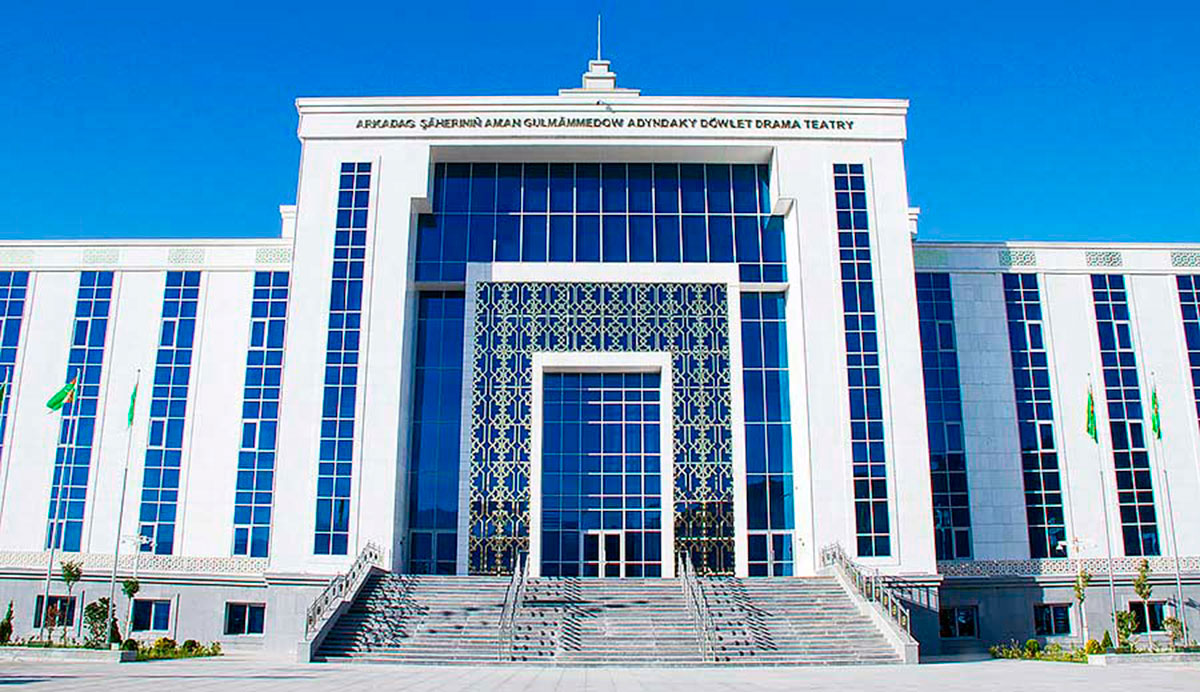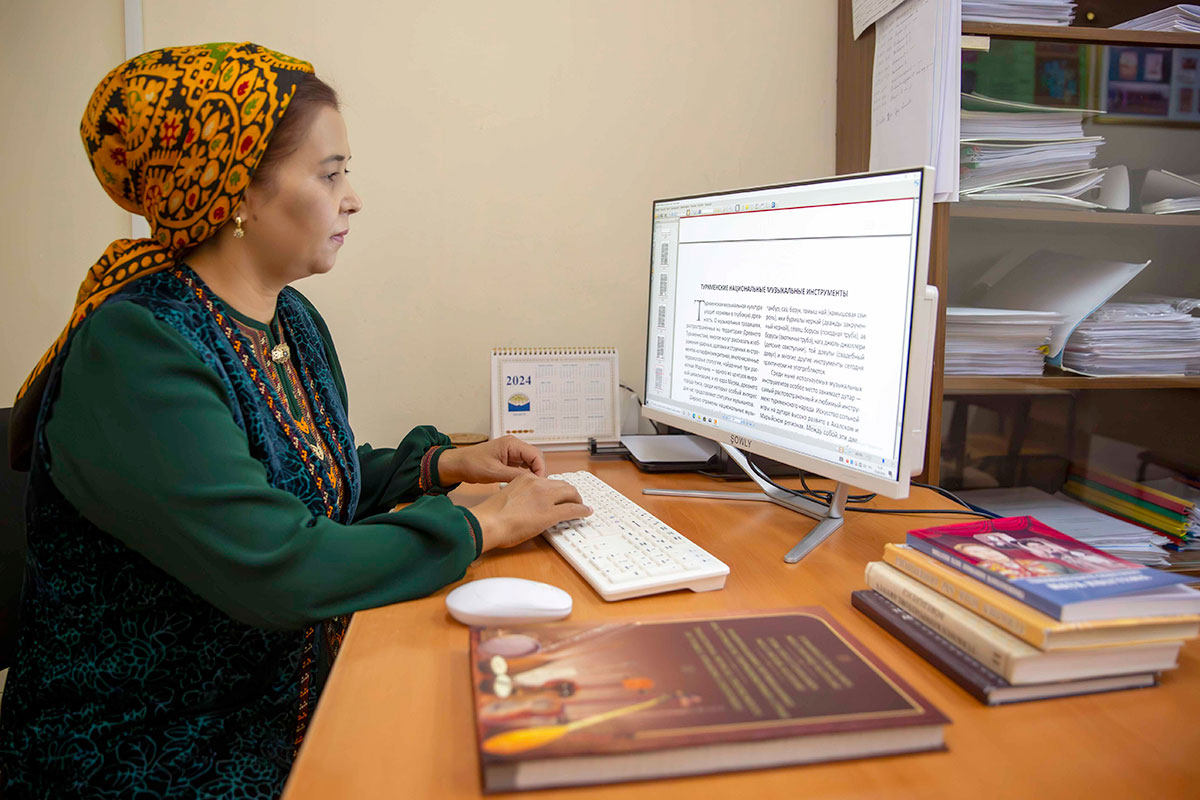Here is the story behind the paintings. As far back as 1934, Martiros Sergeevich was commissioned to go on a trip to Turkmenistan to create. While in Ashgabat, he traveled through the outskirts of the city with his easel. During his visit to Anau, he painted the Anau Mosque. The painting has served as invaluable evidence for archeologists, restorers and historians of Turkmenistan because the Ashgabat Earthquake totally destroyed the ancient architectural monument, only its portal survived.
Saryan’s three other paintings feature landscape scenes nearby the village of Bagir. With the Kopetdag Mountains in the background, the fields are depicted with geometrical pleasantness and neat lines in the artist’s distinctive manner. This can be seen in the well-dug patches of ground, the green and red foothills and the blue mountains with their peaks almost blending into the sky.
The real highlights of the exhibition are the master artist’s ‘Armenia’ from his series ‘My Homeland’ and ‘The Portrait of Lusik Saryan’, which portrays Martiros Sergeevich’s spouse in the center.
The works by Armenian painters were a big draw for the visitors, who found particularly impressive the paintings depicting rural life - ‘A Pleasant Ride’ by Grigor Khanjyan, and ‘At Noon’ and ‘Harvest’ by Mger Abegyan full of freshness and cheerful burst of color.
Minos Avetisyan’s ‘Recollections’ demonstrates the artistic sophistication and meaningful sense. Two women with melancholy expressions on their faces are whiling away a long evening by the dim light of an oil lamp. Mariam Aslamazyan’s painting ‘The Hero Comes Back Home’ left the visitors with the feeling of happiness and joy in tune with its cheerful color palette.
The showcase of the Armenian people’s culture and traditions continued in a different fashion. The State Academy of Arts hosted a master class on Armenia’s folk arts and crafts led by Director of the Teryan Cultural Center, Doctor of Fine Arts Lilit Melikyan, Doctor of Fine Arts, Associate Professor, artist and designer Lilit Fijyan, and artist and designer Anim Simonyan. Students of the Academy, who learned the secrets behind Armenian carpet weaving and were offered insights into the meaning of carpet motifs and designs, highlighted the striking similarity of our traditions of carpet making.
Turkmen girls took obvious enjoyment in learning the Armenian traditional style of needlework (Marash) with embroidery frames and needles in their hands. Napkins and cushions adorned with Marash embroidery were provided as models.
A kasak headpiece, the counterpart of our takhya, is worn by both men and women alike. Girls tend to wear scarves of sheer fabric over the kasak. On special occasions Armenian women decorate their hair with a velvet band with many flowers made of threads. Sometimes, gold coins are attached to the band to hang down the forehead. This element closely links it with the guppa jewelry worn by Turkmen girls.
A small but adorable collection of pottery was of particular interest to Turkmen ceramists. A sacral object (achkyplynk) used for evil eye protection stood out from the other exhibits with its beauty. A ram-shaped wine vessel was a real eye-catcher. Armenian pottery is typically dark. As Lilit Fijyan explained this is caused by the second firing.
Gyzylgul Khudaiberenova, an Academy of Arts student, decided to make a surprise gift to Lilit Melikyan, and while the master class was in progress, she was drawing a graphic portrait of her. Lilit was pleasantly surprised to receive the gift. Thanking Gyzylgul for the fine drawing, she expressed her admiration for talented young Turkmen painters.





